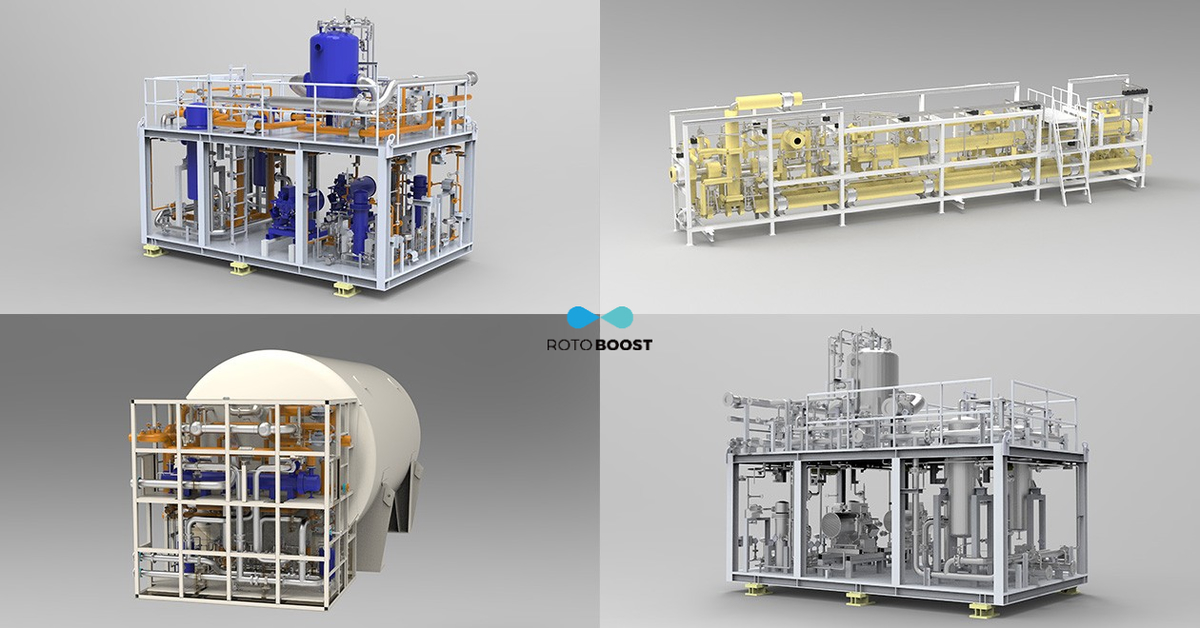Rotoboost’s carbon capture system gets BV approval
Norwegian hydrogen production company Rotoboost’s thermocatalytic decomposition (TCD) process for carbon capture has been approved by the classification society Bureau Veritas (BV).
 PHOTO: Designs of Rotoboost's marine hydrogen production system. Rotoboost
PHOTO: Designs of Rotoboost's marine hydrogen production system. Rotoboost
Rotoboost’s TCD process converts part of the liquified natural gas (LNG) fuel supply into hydrogen and solid carbon (graphite) through a liquid catalyst using heat. The hydrogen produced can be used for “fuel cells or as blend-in fuel for combustion engines or gas-fired boilers.”
Mixing hydrogen with natural gas during combustion will also “reduce methane slip from combustion engines by capturing carbon in solid form before combustion.” Thereby, reducing the main sources of carbon emissions from propulsion onboard a vessel.
The carbon dioxide captured through the process will be recycled back “into industrial processes.”
“The process is able to reduce overall carbon emissions by up to 100 % depending on heating method and the system can be scaled up modularly step by step to meet progressing emission regulations while being cost-effective for ship owners compared to green fuels or conventional carbon capture systems (CCUS),” Rotoboost chief executive Kaisa Nikulainen says.
By Tuhin Roy
Please get in touch with comments or additional info to news@engine.online





